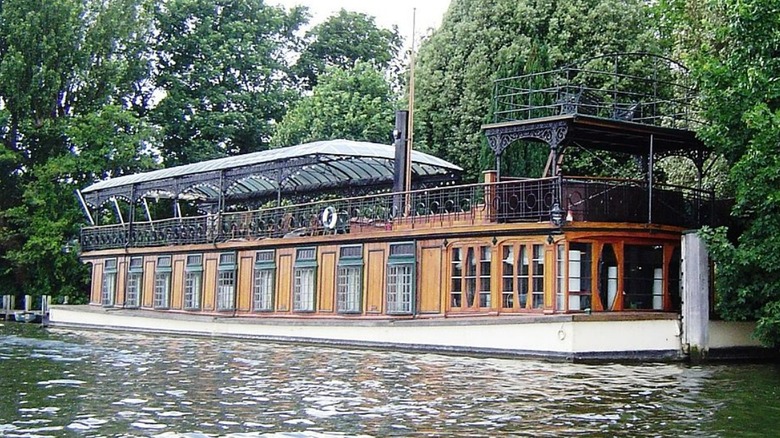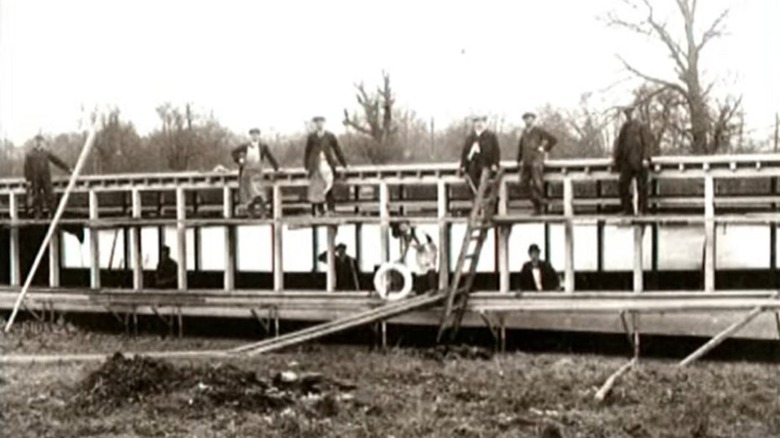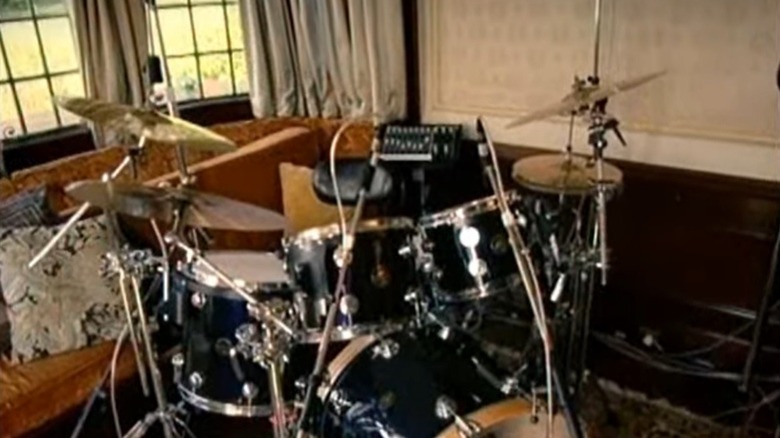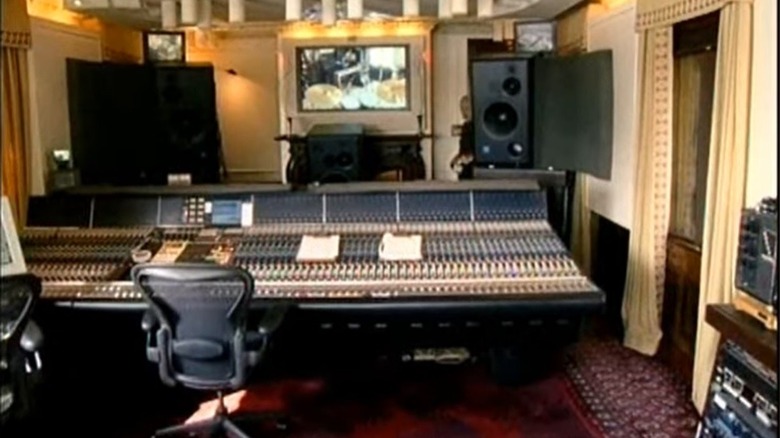David Gilmour's Antique Houseboat Turned Recording Studio Is Pretty Incredible
In 1986, David Gilmour bought a houseboat that he couldn't stop looking at. While cruising around Tagg's Island, London, he continued to pass by the moored antique houseboat. He first caught sight of the top deck and roof and even stopped to peek at the vintage floater. Later, he saw the boat featured in a magazine and decided on the spot that he had to buy it.
Initially, The Astoria would have served as a holiday home for the Pink Floyd co-frontman. However, he quickly had an about-face and devised a plan to utilize the picturesque scenery and unique 'landscape' only a houseboat could provide. The Astoria was transformed into a floating recording studio, and its influence can be seen and, more importantly, heard in the recordings that Pink Floyd would put out afterward.
The houseboat is a fabulous example of vintage houseboat culture — something alive and well in the U.K. — and Gilmour's repurposing of the vessel has breathed new life and intrigue into a true icon of British entertainment history.
The Astoria is a 1911 houseboat built to be the best on the river
The boat includes three cabins along its 27-meter run (88.5 feet). The Astoria was built in 1911 for Fred Karno. When commissioning the Astoria, Karno instructed the designers to give him the best houseboat on the river. Karno moored the vessel at Taggs Island, alongside his hotel and casino, named "the Karsino."
This slice of the River Thames can be found in Richmond, on the western edge of London, and was a favorite among London's day-tripping visitors in the late 19th and early 20th centuries. Today, the island is inhabited by around 100 people living on 62 houseboats. Houseboats can be seen floating at the river's edges around London and the U.K. as a whole. But the Astoria is a unique build, indeed.
Karno was a famous comedic performer and helped create the art form that would later become the silent movie. It's said that Charlie Chaplain stayed on his houseboat. This is the influence that Karno wielded. The boat itself was a grand project, and its main deck was built to house a 90-piece orchestra to put on lavish performances for guests flowing out of the casino next door alongside Karno himself.
David Gilmour saw the boat as an escape from windowless recording rooms
After transitioning the Astoria from vacation venue to recording studio, David Gilmour began spending more and more time recording in the space. Even though his setup saw the entire band recording in one of the smaller cabins, the area offers a dramatic influx of sunlight and fresh air. "I've spent half my life in various recording studios, no windows, no light. And we get here, and it's beautiful," David Gilmour told Rory McGrath, Dara O'Briain, and Griff Rhys Jones from "Three Men in a Boat."
The Astoria was the recording site for two of Pink Floyd's later albums. The band would record in one room and use the other two rooms to place the amps and other equipment necessary to complete the recording process. The control setup in the main room brings all the modern fixtures a studio needs to this century-old floating paradise of sound.
Perhaps the most interesting part of the Astoria's role in recording Gilmour and Pink Floyd is the ambient background noise brought into the mix. The houseboat is by no means soundproof, so the river and passing birds, boaters, and other external noises can be heard in the final productions if you listen carefully. This adds a unique texture to Gilmour's music that can't be replicated.
The Astoria still plays host to Gilmour's recording efforts
In late 2022, the Astoria needed hull repair and saw her entire mass lifted out of the Thames for repair. The houseboat has since been refitted with a steel hull and will continue to play host to Gilmour's recording efforts for many years.
After Roger Waters left Pink Floyd in 1985, David Gilmour and drummer Nick Mason were forced to engage Waters in a messy public back and forth about the band's name and future. This chaotic experience may have influenced Gilmour's desire to escape the dark, stuffy studio atmosphere and create music in a new environment. In the years since Pink Floyd finally stopped recording, Gilmour has continued to use the Astoria as a place to make music as part of his solo career. He recorded "On an Island" and "Rattle That Lock" on the houseboat in 2006 and 2015, respectively.
The space is beautiful and begs to be used to create new and exciting works of art. The Astoria is outfitted with over 14 miles of cables and includes ATC main monitors, active speakers, and an ATC subwoofer. The mixing console in the studio is a Neve 88R, bolstered by three Studer A827 multi-tracks and Ampex ATR-100 tape recorders. Nick Whitaker designed the space's acoustics, and James Guthrie and Andrew Jackson handpicked the equipment.



